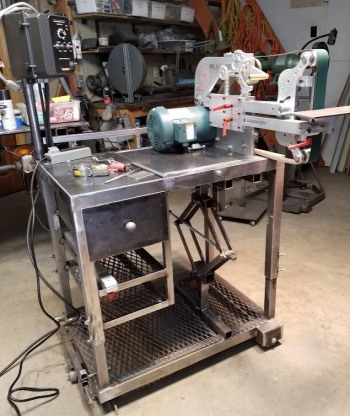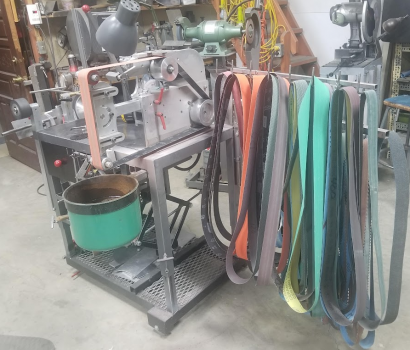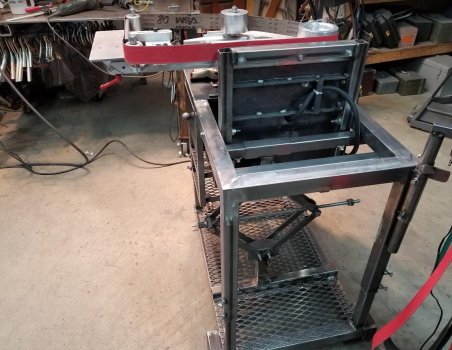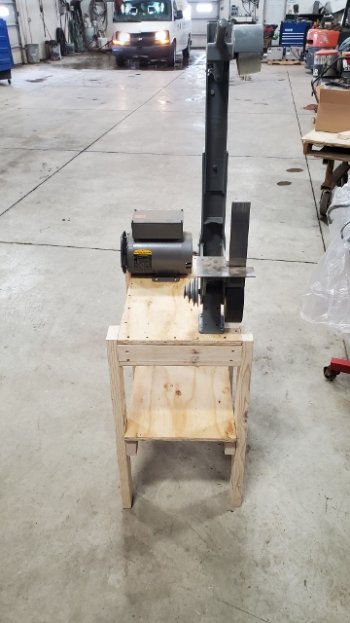All new at knifemaking and time for me to get into it. Been collecting and saving equipment for a while.
Have a Cootes 2x72 grinder and need ideas to build the table. Have a hard time searching for this. I have a 2.5 hp 1725 rpm motor and ordering a 3 step pulley 2,3,4".
Question I have is the grinder table setup. Looking for the proper starting height, if too tall I can cut the legs down. I am thinking of something like a 16x24 plywood tabletop and the motor on bottom shelf with belts thru top table. My concern other than height is balance, will the cootes be top heavy? Or will the motor take up the balance? Like to see pictures and ideas before I start cutting wood, open to ideas.
Thanks a Million
Have a Cootes 2x72 grinder and need ideas to build the table. Have a hard time searching for this. I have a 2.5 hp 1725 rpm motor and ordering a 3 step pulley 2,3,4".
Question I have is the grinder table setup. Looking for the proper starting height, if too tall I can cut the legs down. I am thinking of something like a 16x24 plywood tabletop and the motor on bottom shelf with belts thru top table. My concern other than height is balance, will the cootes be top heavy? Or will the motor take up the balance? Like to see pictures and ideas before I start cutting wood, open to ideas.
Thanks a Million




